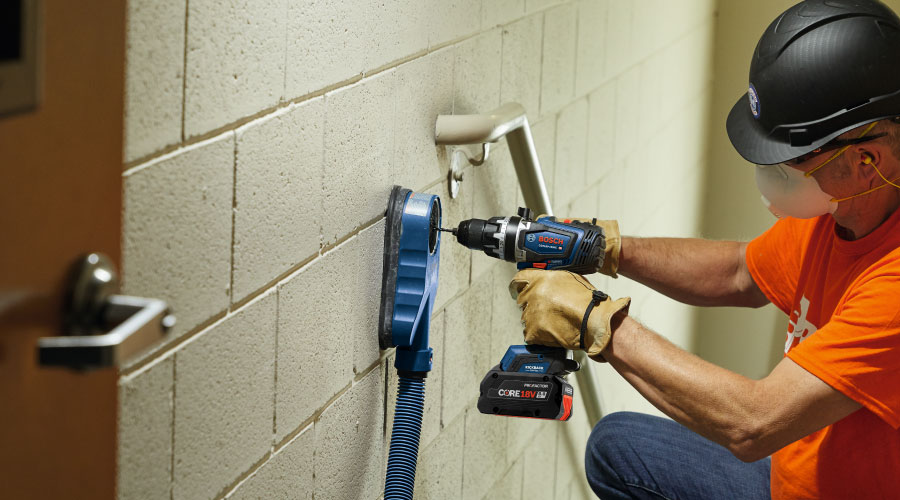In a Blink, Arc Flash Can Kill or Maim Workers and Damage Property
An arc flash comes like a bolt out of the blue when a worker is performing routine activities on energized electrical equipment. There is a short circuit, then an arc flash — a sudden, explosive electrical arc through the air, which causes air temperatures to rise up to 35,000 degrees F in less than one thousandth of a second, along with a shock wave blast accompanied by vaporized metal and shrapnel, causing serious burns or even death. An arc flash also creates a rapid rise in air pressure and a 160-decibel or higher sound wave that can cause permanent hearing damage or total hearing loss.
The blast hurls molten metal and other debris at velocities up to 700 miles per hour. Over in milliseconds, it leaves devastation in its wake. In addition to the risk of serious injury or fatality to the worker and bystanders, an arc flash damages surrounding equipment and facilities; it is also a fire hazard with potential repercussions for a much larger area of the building.
As sudden as an arc flash is, the risk itself is well understood, and so are the steps to be taken to minimize the danger. In fact, current regulations under the National Fire Protection Association's (NFPA) National Electrical Code and the Occupational Safety and Health Administration (OSHA) require employers to assess the arc flash hazard, label electrical equipment accordingly, provide the correct personal protective equipment and properly train their workers.
Risks and Repercussions
Whenever a worker is performing routine activities on energized electrical equipment — including switching, maintaining, testing and operating components — there is always a danger of an arc flash. An arc flash can result when racking, opening and closing breakers, removing panel covers, or opening electrical equipment cubicle doors, or when taking voltage and current measurements. The danger is not limited to a worker who may actually be touching the equipment because an arc flash can occur without contact with an energized conductor or live parts.
Because an arc flash travels through the air, it can injure or kill anyone who is within a certain distance from the equipment. All of the current codes and standards require employers to establish a flash protection approach boundary around electrical equipment based on the distance within which a person could receive burns in the event of an arc flash. As many as 80 percent of all electrical injuries are burns resulting from an arc flash and ignition of flammable clothing. More than 2,000 people are admitted into burn centers each year with severe electrical burns, with an average stay of two to four months.
The risk extends beyond the central utility plant and electrical panels throughout the building. Arc flash poses similar risks to IT workers in data centers as they work with electrical panels in the power distribution units, which supply power to equipment on the racks.
Arc Flash Regulations
Beginning in 2002, NFPA Standard 70, the National Electrical Code (NEC), has mandated labeling requirements as set forth in article 110-16, and electrical inspectors now enforce these requirements — essentially, a label on each piece of equipment, which identifies the potential incident energy associated with an arc flash event from zero to four. For example, a Category 1 arc flash event's incident energy would range between 4 to 7.999 Cal/cm2. To compare, a Category 0 event with incident energy of 1.2 Cal/cm2 would result in second degree burns. Also, NFPA Standard 70E, "Standard for Electrical Safety in the Workplace," articles 110.8(B)(1)(b) and 130.3, "Arc Flash Hazard Analysis," state that an arc flash hazard analysis shall determine the arc flash protection boundary and personal protective equipment that people within the arc flash protection boundary shall use.
Similarly, OSHA 1910.132(d)(1) and 1926.28(a) require employers to quantify the risk to workers from exposure to incident energy released during an arc flash event, provide appropriate personal protective equipment (PPE) for non-prohibited work, and provide training so that workers understand the arc flash hazard and take correct protective actions. For example, for protection in working with Category 3 equipment, a worker would wear: cotton underwear, fire-resistant shirt, pants and coverall, hard hat, safety glasses or goggles, flash suit hood, hearing protection, leather gloves and leather work shoes.
To note: Manufacturers are allowed to label their garments for a given PPE category as long as the garment's thermal value falls within the category's range. For example, a garment with an 8 Cal/cm2 rating can be labeled Category 2 even though the Category 2 can go up to 24.99 calories. Therefore, when selecting PPE, the actual calculated incident energy at the specific work location must be compared to the specific garment thermal rating within the given category to correctly protect the worker from an arc flash hazard.
In addition, the National Electrical Safety Code (ANSI C2) 2009, section 410 states that the employer shall ensure that an assessment is performed to determine potential exposure to an electric arc for employees who work on or near energized parts or equipment. Furthermore, it requires the employer to inform the employees about safety rules, safety training and hazard evaluation, including wearing of arc-rated clothing.
Related Topics:












